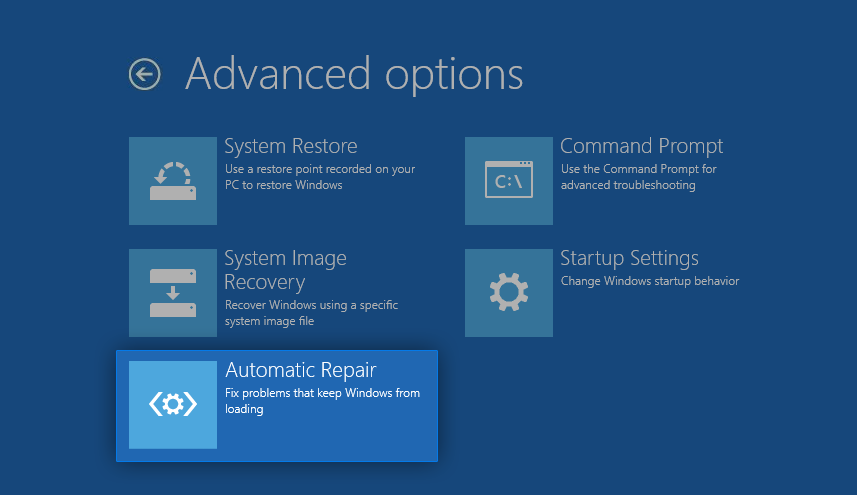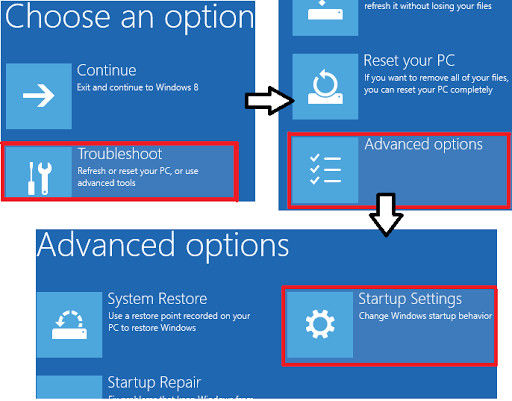
 Look for any device manager with a yellow triangle, right-click -> try to update the driver.
Look for any device manager with a yellow triangle, right-click -> try to update the driver.  Go to device manager by typing “device manager” on the search bar at the bottom left-hand corner. Boot the computer in Safe mode with networking by going to Troubleshoot -> advanced option -> startup settings -> safe mode with networking. Try to restart the computer in advanced troubleshooting option by pressing F12 while starting the computer or holding “SHIFT” key while clicking on the restart button. These phenomena are used by Microsoft in its LKGC ( last know good configuration) boot option. When we restart the computer in safe mode and complete the login process, the startup file used by Windows gets refresh and loads without any interferences on its next boot. When these kinds of issues occur, the startup files don’t load thus causes such problem. It checks for all dependent file in the registry/application and then starts. It seems very straight forward and doesn’t make sense from the top, however under the hood what is happening is when a system is updated and computer boots up for the first time. Once logged in Safe Mode, restart and login back in normal mode and checkĪbstract of solution 1, what exactly we are trying to do is booting the computer in safe mode -> logging in and restarting it back in standard way. Select Safe Mode and login into the computer. While restarting the computer, press F12 to open Advanced Troubleshooting Wizard. Try to restart the computer or do a hard shutdown, if required. Here are a few ways via which we can resolve this problem. Thus, if an application which is not at all compatible with Windows 10, it will start creating a problem like not responding, login screen error, graphics error, an issue with registry or policies.Īs we now understood all scenarios in which Windows 10 login screen loop occurs, let’s work together to troubleshoot this issue. When a user upgrades to the newest build of Windows 10 using an option provided by Windows 10 installer, it upgrades or migrates all files/applications/drivers and many more. Another reason is upgrading from the previous version of Windows to Windows 10. Third would be connected peripheral devices which don’t fit properly with the newer version of Windows 10 after the Windows update, and that mixes up with already running OS and causes such issue. Second reason would-be third-party application recently installed/updated device drivers. However, there are situations were newly installed Windows Update doesn’t get installed correctly, or conflict between any third-party applications causes a breakdown
Go to device manager by typing “device manager” on the search bar at the bottom left-hand corner. Boot the computer in Safe mode with networking by going to Troubleshoot -> advanced option -> startup settings -> safe mode with networking. Try to restart the computer in advanced troubleshooting option by pressing F12 while starting the computer or holding “SHIFT” key while clicking on the restart button. These phenomena are used by Microsoft in its LKGC ( last know good configuration) boot option. When we restart the computer in safe mode and complete the login process, the startup file used by Windows gets refresh and loads without any interferences on its next boot. When these kinds of issues occur, the startup files don’t load thus causes such problem. It checks for all dependent file in the registry/application and then starts. It seems very straight forward and doesn’t make sense from the top, however under the hood what is happening is when a system is updated and computer boots up for the first time. Once logged in Safe Mode, restart and login back in normal mode and checkĪbstract of solution 1, what exactly we are trying to do is booting the computer in safe mode -> logging in and restarting it back in standard way. Select Safe Mode and login into the computer. While restarting the computer, press F12 to open Advanced Troubleshooting Wizard. Try to restart the computer or do a hard shutdown, if required. Here are a few ways via which we can resolve this problem. Thus, if an application which is not at all compatible with Windows 10, it will start creating a problem like not responding, login screen error, graphics error, an issue with registry or policies.Īs we now understood all scenarios in which Windows 10 login screen loop occurs, let’s work together to troubleshoot this issue. When a user upgrades to the newest build of Windows 10 using an option provided by Windows 10 installer, it upgrades or migrates all files/applications/drivers and many more. Another reason is upgrading from the previous version of Windows to Windows 10. Third would be connected peripheral devices which don’t fit properly with the newer version of Windows 10 after the Windows update, and that mixes up with already running OS and causes such issue. Second reason would-be third-party application recently installed/updated device drivers. However, there are situations were newly installed Windows Update doesn’t get installed correctly, or conflict between any third-party applications causes a breakdown 
Most of us are aware that Microsoft deploys updates to keep the OS up to date.
The first and foremost reason for this problem is the recently installed Windows Update.










